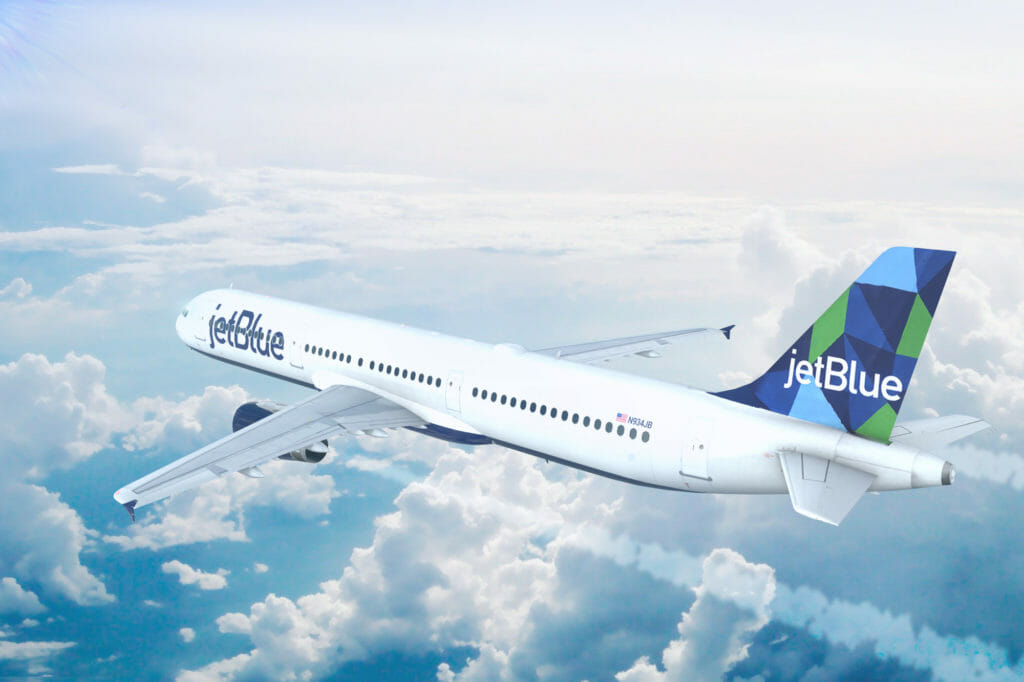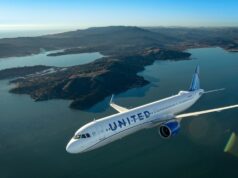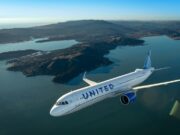
As I may have expressed, the purpose of my articles is to both entertain as well as provide insight through the sharing of pilot stories and their paths toward success. I use the word success with caution as it has different meanings for different people. As such, the path a pilot takes will vary from person to person, however regardless of the process and the outcome, there always seem to be some underlying value that surfaces when a pilot’s story is shared.
This month, I had the fortune of learning about the fascinating journey of Carrie Braun, a JetBlue Airways First Officer. From skydiving instructor to Grand Canyon tour pilot, air ambulance pilot to jet-setting across the globe as a corporate captain, Carrie’s depth of experiences span a diverse aircraft, operations and geographical locations. The culmination of her experiences offers the audience an opportunity to learn not only about what opportunities exist, but how through persistence and hard work, through the ups and downs, success is the result of patience and determination.
Carrie first took to the skies in a rather untraditional manner compared with most other pilots. Typically, an aspiring pilot looks to the sky with the desire to master flight from the relative safety of a trusted aircraft. Carrie, however, was drawn to the pursuit of jumping from that relative safety and before she knew it, was a certified skydive instructor while still in her teens. It wasn’t long before she realized that piloting was in her blood and Carrie enrolled at a local university in Ohio to begin her career as a pilot. In 2006, Carrie transferred to Embry-Riddle Aeronautical University in Daytona Beach and graduated with her Bachelor’s degree in Aeronautical Science. She found her first paying job as a pilot, working for a carrier called Drop Zone, flying the Casa 212 Turboprop. Within the first few months with only 250 total hours under her belt, Carrie was sent to Canada, where she found herself crisscrossing the country, flying in and out of rough and tough terrain and quickly learning how to work in a multi-crew environment. Unfortunately, her time with Drop Zone was short-lived and Carrie found herself looking for new employment. Soon Carrie was hired by Vision Airlines, a Las Vegas-based carrier that flew the Dornier 228/328 on Grand Canyon tours. Flying upward of 10 legs per day (five roundtrips from Vegas to the southern rim of the Canyon) meant Carrie was building time fast while flying in one of the most scenic environments in the world. She quickly upgraded to the Dornier 328 and transferred to the carrier’s charter services department. With only 500 hours, Carrie was now flying charter across Canada, the U.S. and Mexico.
It is from this point in Carrie’s career that a trend, common in Part 135 operations, becomes evident. The certificate of the Dornier 328 she was flying for Vision Airlines was pulled and changed ownership. Being licensed and having experience in the aircraft, Carrier was asked to join the plane with its new owners, serving as their personal pilot. While exciting, this lasted only six months before the plane was lost again due to bankruptcy. Carrie was back on the hunt and in 2009 was hired as a King Air 200 pilot for an air ambulance service out of Baltimore, Md. Within four months of starting that job, Carrie applied and was hired by Ultimate Jet Charters based out of Akron, Ohio once again flying the Dornier 328 jet. Over the next few years, Carrie found herself flying for various carriers, each facing financial constraints and the loss of aircraft certificates.

By 2012, Carrie had accumulated three PIC type ratings and with 2,500 total hours, was hungry to fly for a more stable organization. Hired by Aviation West Charters in the Learjet 60, Carrie was once again flying air ambulance. Her first trip to Beirut, Lebannon (she did many) is among her favorites. She was “airlined” along with her co-pilot to Iceland where they met the aircraft. From there, they operated the flight from Reykjavik to Prague for a tech-stop and then on to Beirut, where they were greeted like royalty. The cultural differences between Western countries and those in the Middle East meant she and her co-pilot were treated unlike anything she had ever experienced before. As part of the company’s operating procedure, aircraft were kept in constant motion and crews were flown to meet the plane wherever it was as a means of ensuring that its motion never ceased. As such, another vivid memory of Carrie’s is flying into Patagonia to pick up a hiker with altitude sickness and return to the U.S. for emergency care. While simple on the surface, the processes of flying down and back was far from basic. Leaving Knoxville, Tenn., Carrie and her co-pilot were sitting in the back while another crew flew the first 10 hours south. The crews swapped places and now Carrie was to command the next 10 hours to the southern tip of Argentina. What must have felt like a brief 24-hour break, they were back in the air, flying north before landing in Mexico and eventually being “airlined” back to base.
Aviation West closed shop in 2014 and Carrie eventually found employment flying as a personal pilot in a Learjet 60. As in the cases before, the aircraft certificate changed hands and the job was lost after a few months. Hired by Custom Jet Charters in 2015, Carrie received her fourth type rating in a Hawker 850 flying in the Middle East. It behooves me to mention that during Carrie’s pursuit of new flying opportunities, she used the Climb 350 website to search and apply for jobs. After six months, JetBlue Airways called and Carrie accepted a position as a First Officer flying the Airbus 320, her fifth type rating. When asked about how she likes JetBlue so far, it was easy to hear in the tone of her voice her thrill of having a more stable schedule and job security.
Carrie has flown to almost every continent on the globe and during her experiences, she honed her airmanship skills. She was afforded the opportunity to see places and meet people from a wide range of cultures and backgrounds all while building experiences that qualified her for a position at JetBlue. While different than most, Carrie’s path offers insights to those just starting out, that the success we’re all looking for in our careers can be obtained by taking different paths. However, at the end of the day, as Carrie well demonstrates, when we face failures, uphill battles, and an ever-changing landscape, keeping focus and pushing forward pays off in the end.







































































